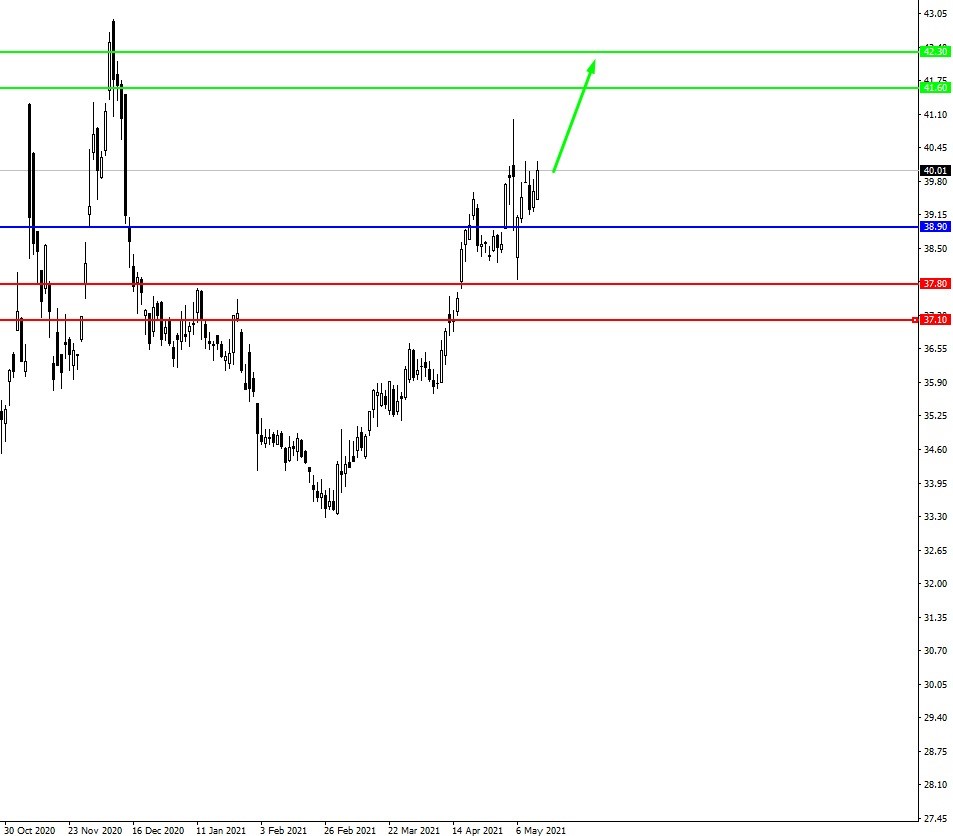
Source: PaxForex Premium Analytics Portal, Fundamental Insight
Pfizer is one of the world's best-known pharmaceutical companies, but it does not imply that all market participants have a clear idea of what makes it a strong competitor. Indeed, in particular, as a result of the hype surrounding the incredibly rapid development of a coronavirus vaccine, many investors have unrealistic expectations for the company's stock.
In contrast, the smartest investors have a very different view of Pfizer, thanks to their knowledge of where the company has been and where it plans to go. Let's look at a few factors that probably aren't so obvious to everyone.
First, through its partnership with BioNTech, Pfizer has the capabilities and know-how it needs to become an influential player in the emerging field of mRNA vaccines and therapeutics.
Remember, even though Moderna may have a reputation as a major mRNA drug company, Pfizer took first place in the coronavirus vaccine race.
And now that it has such stunning success under its belt, there's nothing to stop it from taking on the next big thing, which means producing booster vaccines to fight varieties of coronavirus (if necessary) and starting work on entirely new mRNA projects. In addition, the company's management has said that it will not need BioNTech's help to create an mRNA-based drug next time around - which means that the company will not have to share profits.
Second, Pfizer's profits may soon be boosted by two very different factors. The first is that the company's coronavirus vaccine is being produced in larger and larger volumes, which increases the beneficial effects of economies of scale inherent in pharmaceutical manufacturing. By the end of the year, the company hopes to have produced at least 2.5 billion doses.
The overall impact of scale on the company's profits may not be as great, but it's still a step in the right direction.
A much more important factor is that the company separated its generic drug division, Upjohn, to merge with another manufacturer, which was completed in November 2020. The newly formed entity, Viatris, will now produce generics companywide. Because Pfizer is no longer obligated to continue to produce low-margin drugs, it will have more leeway to profit from successful drug development projects. The magnitude of the benefit remains to be seen, but it will likely take several more years for it to become fully visible to shareholders.
Third, on May 5, the US trade representative to the World Trade Organization (WTO) said that the country was ready to drop patent protection for coronavirus vaccines developed by US companies. It caused shares of several vaccine manufacturers to plummet, as well as outrage from pharmaceutical industry lobby groups and commercial associations. But reasonable investors simply don't care about this new development because it's just a symbolic gesture.
In short, Pfizer has nothing to fear from abandoning patent protection for its coronavirus vaccine because the manufacturing technology and technical expertise needed to actually produce vaccines on an industrial scale are still under its control. While others may soon be able to copy its vaccine without consequence in theory, the likelihood that someone else could actually use the information is simply slim, since they do not have the many trade secrets necessary to do so.
And fourth, no matter how powerful and profitable Pfizer is, its stock will not double or triple in value. Instead, total shareholder return will continue to be made up of modest price increases over time, combined with dividends, which currently stand at 3.87%.
There is one problem, however, that new investors may not realize. Initially, management planned to cut Pfizer's dividend after Viatris began paying its own dividend in the second quarter so that shareholders at the time of separation would receive the same total payout as before. Pfizer said during its most recent earnings report that it would not do so because its financial position is now fairly strong. However, new investors should know that management was considering this possibility, as the company may revisit the idea later.

Provided that the price is above 38.90, follow these recommendations:
- Time frame: D1
- Recommendation: long position
- Entry point: 39.86
- Take Profit 1: 41.60
- Take Profit 2: 42.30
Alternative scenario:
In case of breakdown of the level 38.90, follow the recommendations below:
- Time frame: D1
- Recommendation: short position
- Entry point: 38.90
- Take Profit 1: 37.80
- Take Profit 2: 37.10













